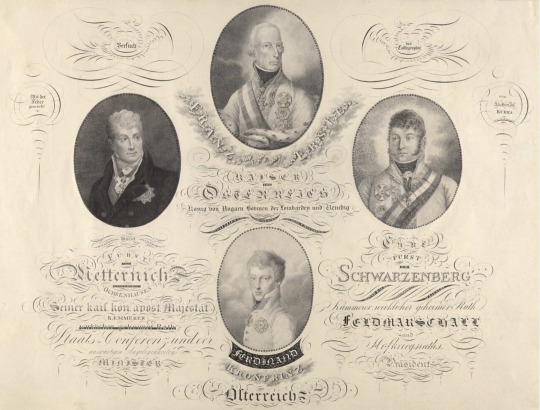#just german (and austrian) things I guess?! 😅
Text
So, the thing I love the most about Napoleonic era is that there are soooo many ways of exploring the matter! Basically you can start with any country, affected by the impulse coming from the Revolutionary France, and slowly progress forward, expanding knowledge on national specifics and different “reactions” to the current state of events.
Some people were completely against it, some finally gained much-needed freedom for the development of their own governmental systems, some got essential resources which helped those brave men and women who fought for their own lives and independence of their homelands.
It’s always breathtaking as well when you can trace the links between intellectuals from all across Europe, despite their political preferences or any other kinds of opinion on various aspects of society (because if we start evaluating them from the modern point of view, many of those ideas would seem rather unjust and even infuriating 😅) , as they indicate the same deep connections which people can establish nowadays with the help of social networks and Internet in general.
And even when it comes to those - er - rather unpleasant “ways of thinking”, with which you personally cannot associate, sometimes you acknowledge them nonetheless and even start enjoying to some extent the history of those sophisticated systems which developed over centuries and eventually met their logical end. Not so long ago I’ve experienced this kind of attraction to the Austrian (and German at some point cause, you know, Holy Roman Empire) piece of a metaphorical Napoleonic pie and now I’m slowly falling into the pit of Habsburg’s monarchy shenanigans.
You know, it’s truly… fascinating.
As a Russian who studied history of his home country for his whole life - history and literature classes in school, the whole course on Russian history in university (yep, I’m just a tiny bit of a “historian” myself - undergraduate who dropped out due to overall burnout and urgent necessity to concentrate on his own creative work and all-time favourite historical epoch but who wants to continue his journey eventually) I spot some extraordinary similarities between the struggles experienced by Russian and Austrian Empires - in the 19th century especially.
So it’s some kind of “I feel you, man” experience, I guess. 😂 🇷🇺🤝🇦🇹
Even though my appreciation of Austrian history is very strong, I usually tend to reduce everything to the Napoleonic wars concentrate (or maybe I should finally start calling it “the first half of the 19th century”thanks to historical figures like Metternich - speak of a devil - as these politicians/military men/etc. lived such incredibly long and busy lives that it’s impossible to limit yourself to Napoleonic era only).
And here is one incredible piece on the imaginary “altar” that pretty much reflects my current value system. ✨

As you can see, it’s a miraculous lithograph “made with a feather” ( mit der Feder gemacht ) in 1816 by Adalbert Joseph Kurka.
(Actually, there is a small touch of Photoshop magic: Schwarzenberg was looking the opposite direction in the original picture and I thought it was much more fitting for him to exchange glances with Metternich as they went through all of the troubles successfully! What a relief it was for them, I bet…)
In my opinion, it’s pretty much safe to say that this piece of art probably symbolises the final triumph over Napoleonic France, considering it’s production date. While the Imperial court was minding the state affairs in the Northern Italy which had returned to Habsburg’s monarchy once again, some skilled craftsman depicted the current “balance of power” in the Empire in an artistic form.
So we have a ruling emperor with his beloved eldest son who was only twenty-three years old at the moment… 👑


…And two loyal servants of the imperial crown - a statesman and a military man - whose continuous common efforts finally led to the much-needed years of stability and peace (at least in theory)! 🎉


Picturesque calligraphic inscriptions under their portraits read that
Clemens Wenzel Lothar Prince von Metternich-Winneburg-Ochsenhausen [is] His Imperial and Royal Apostolic Majesty’s Chamberlain, Privy Councillor, State Chancellor and Minister of Foreign Affairs
and that
Carl Prince zu Schwarzenberg [is] His Imperial and Royal Apostolic Majesty’s Chamberlain, Privy Councillor, Field-marshal and President of Hofkriegsrath [Court Military Council]
Magnificent sight, isn’t it? :)
Soon I will make a post about how exactly my personal acquaintance with Herr Schwarzenberg had started (that was originally the reason for why it all escalated so quickly a year and a half later).
Stay tuned! 🪄
#history#napoleonic era#napoleonic wars#franz ii of austria#ferdinand i#klemens von metternich#karl zu schwarzenberg#austrian empire#austrian history#19th century
34 notes
·
View notes